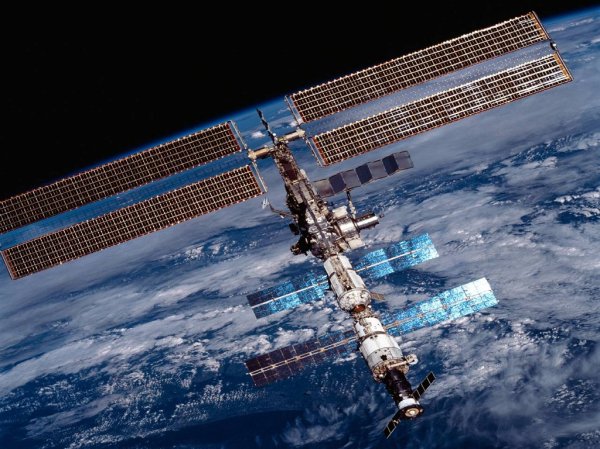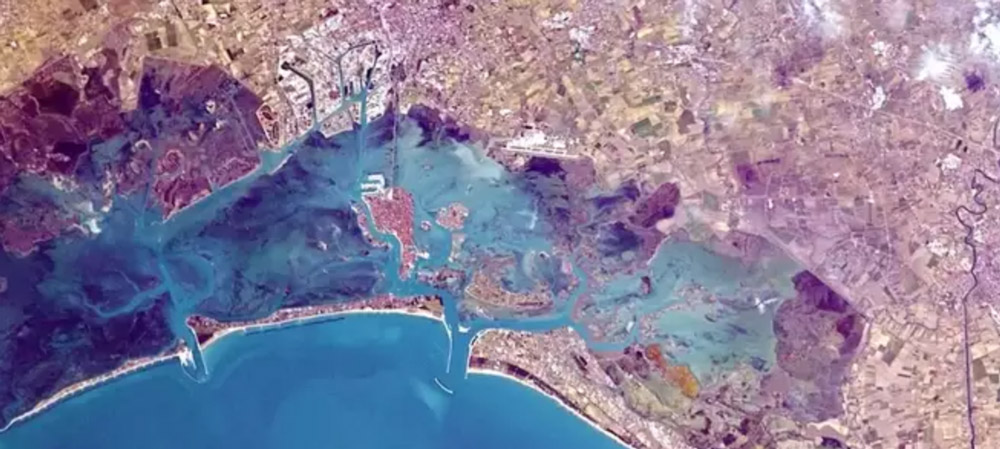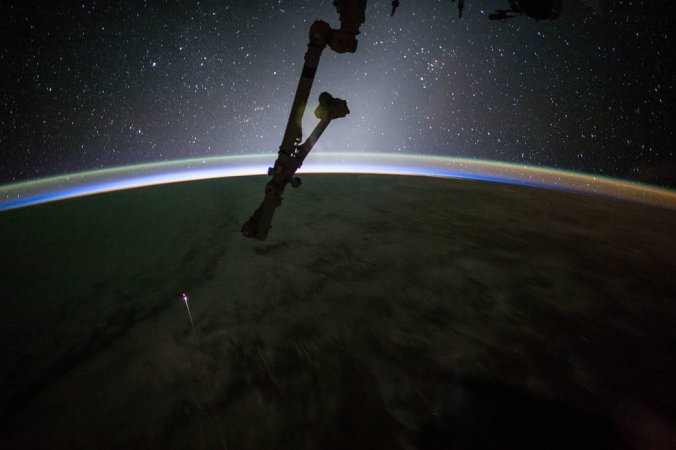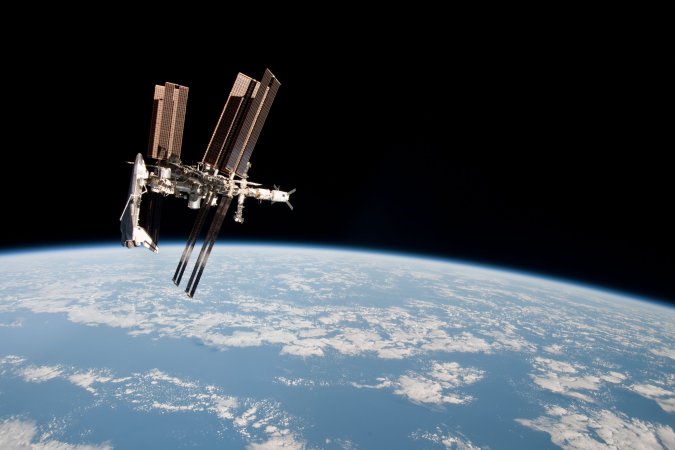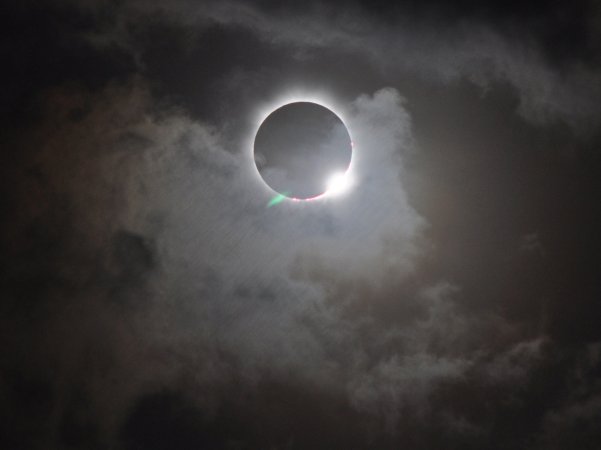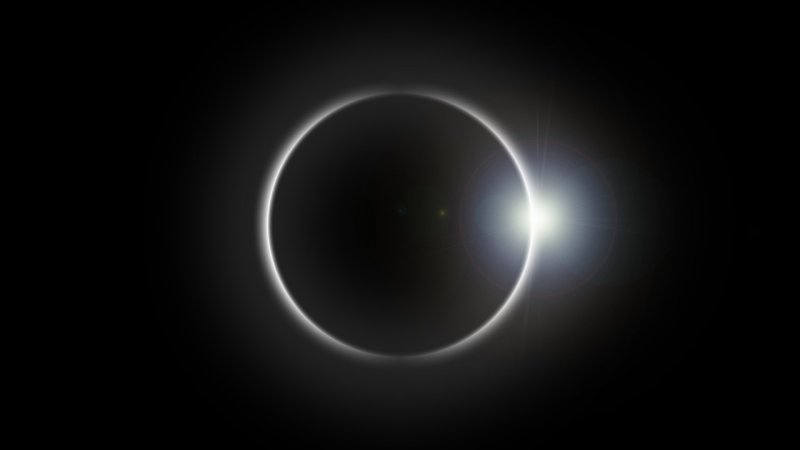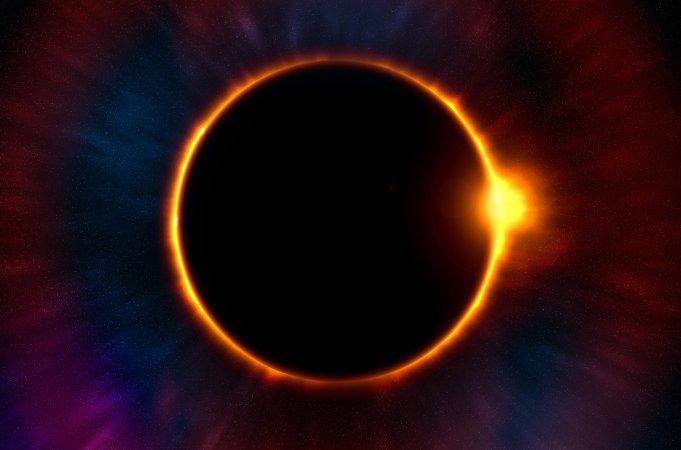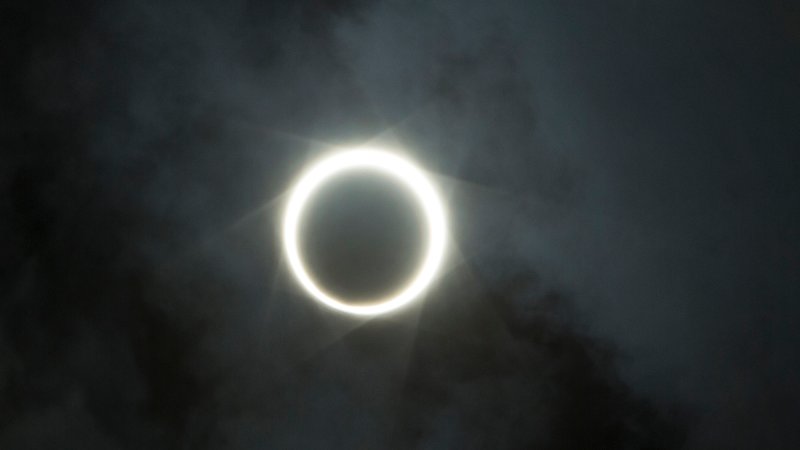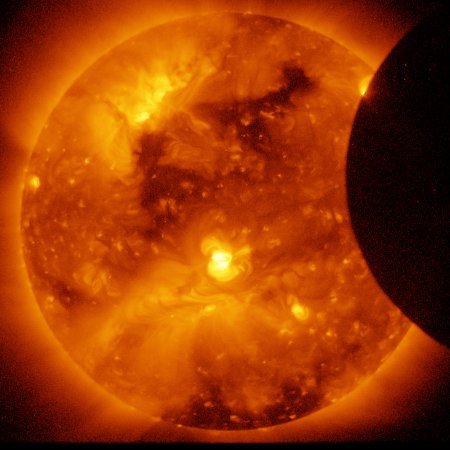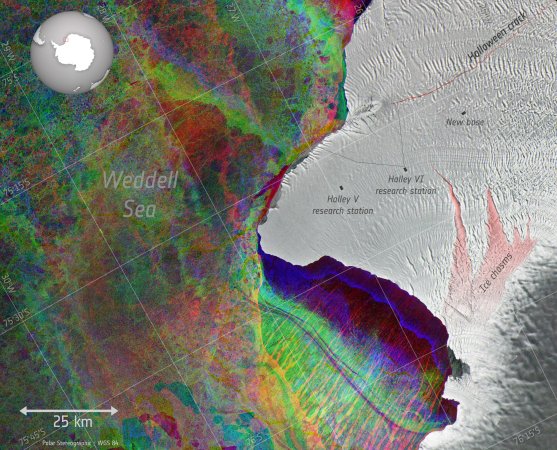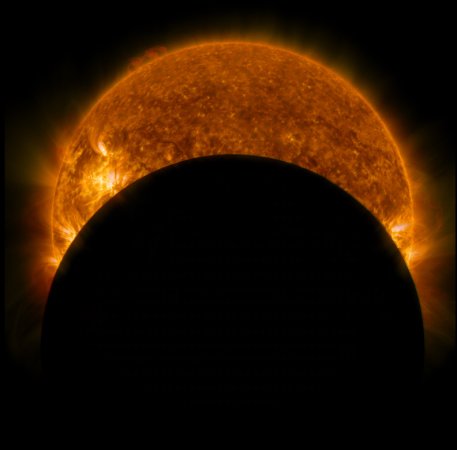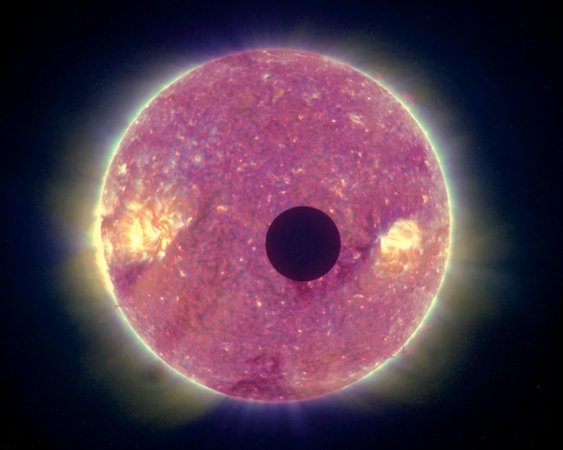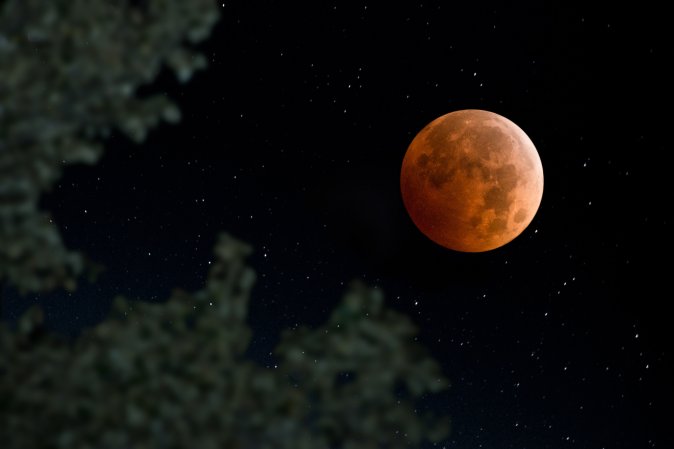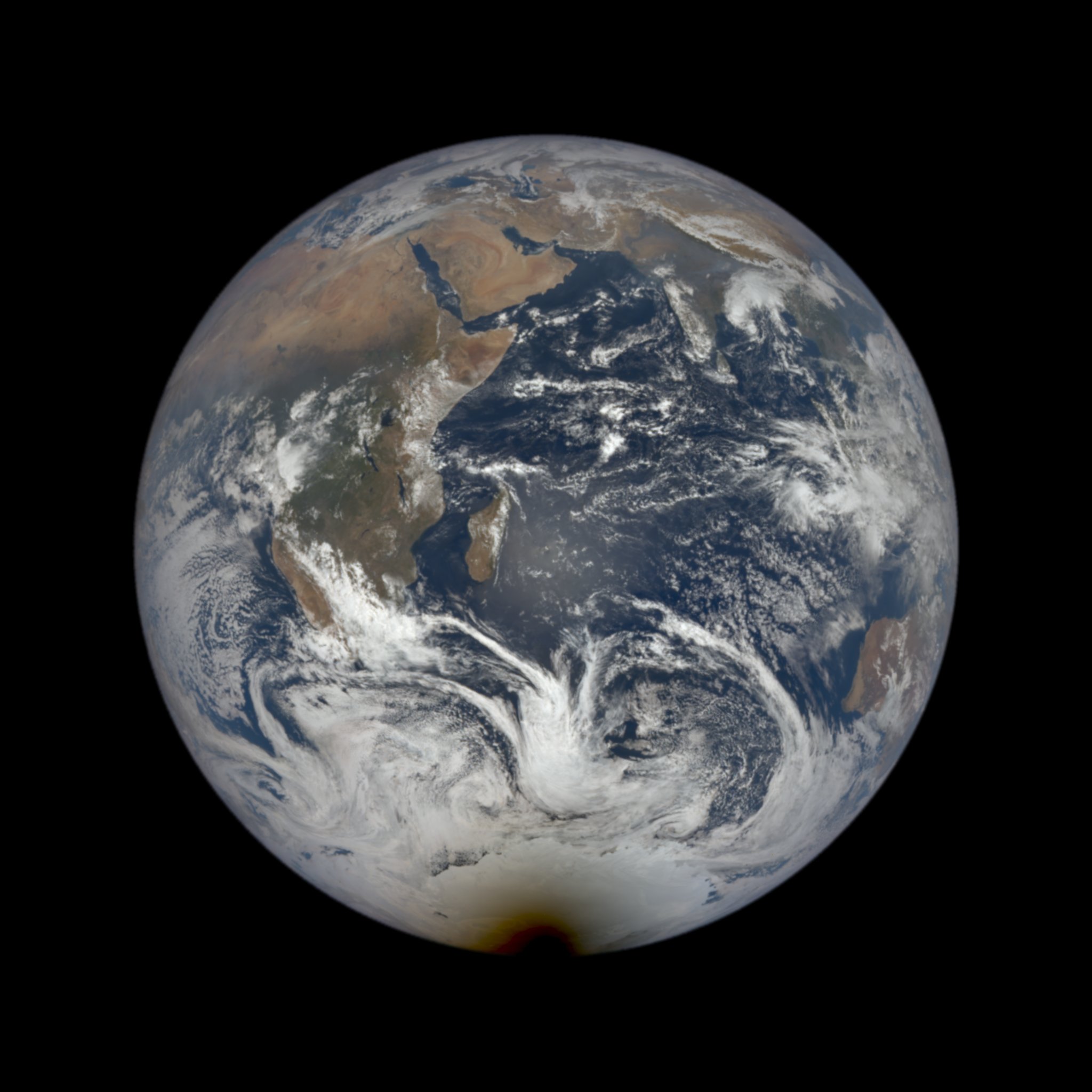

Earth was perfectly aligned with the moon and sun on Saturday, December 4, creating the only total solar eclipse of 2021 and plunging Antarctica into darkness.
Although the eclipse was partially visible from parts of Australia, New Zealand, Argentina and South Africa, only a few lucky observers saw the full total eclipse from the ground in Antarctica. A few non-Earthbound onlookers also witnessed the eclipse—seven astronauts aboard the International Space Station huddled into the Cupola, the panoramic dome attached to the station, to enjoy the phenomenon.
“Saturday morning, the Expedition 66 crew squeezed into the Cupola to check out the total solar eclipse that occurred over Antarctica and the Southern Ocean,” tweeted NASA astronaut Kayla Barron, sharing two photos of the spacefarers’ view. “Here the moon casts an oblong shadow on the Earth’s surface. It was an incredible sight to behold.”
Total solar eclipses happen somewhere on Earth approximately once every 18 months on average, but some specific places go centuries between eclipses. The last total solar eclipse to happen over Antarctica was on November 23, 2003, and the next one won’t occur until April 20, 2039.
[Related: One weird thing about eclipses you’ve probably never noticed]
This specific solar eclipse was extra special because it occurred during Antarctic summer. In an Antarctic summer, the region is bathed in light around the clock—the sun never sets—in a phenomenon called midnight sun. The juxtaposition of perpetual light, a few minutes of complete darkness, then back to perpetual light must have made this an event to behold.
The last total solar eclipse in the United States stunned sky gazers from Oregon to South Carolina in 2017. 2022 will be completely without any solar eclipses, partial or total. The next partial eclipse will occur on April 20, 2023 and will be visible from Southeast Asia, Australia, and Antarctica. The next total solar eclipse in the United States will be visible from Texas to Maine on April 8, 2024.


